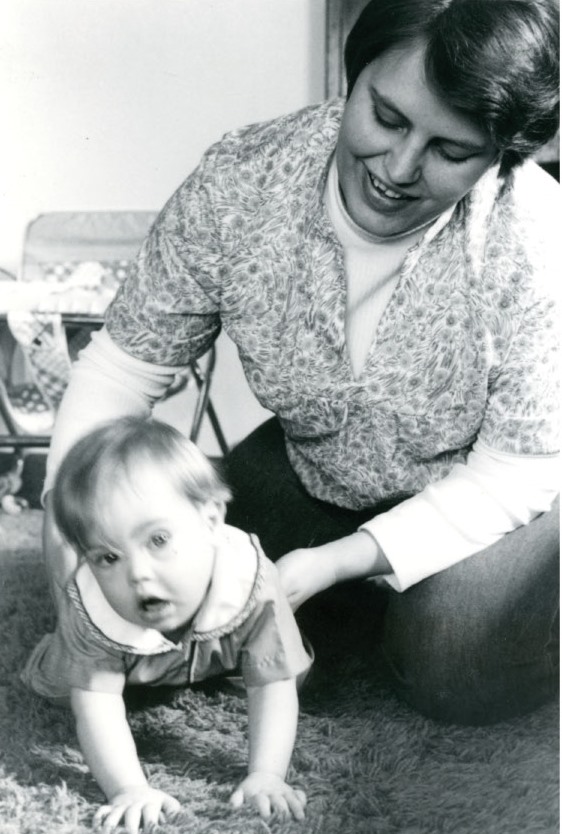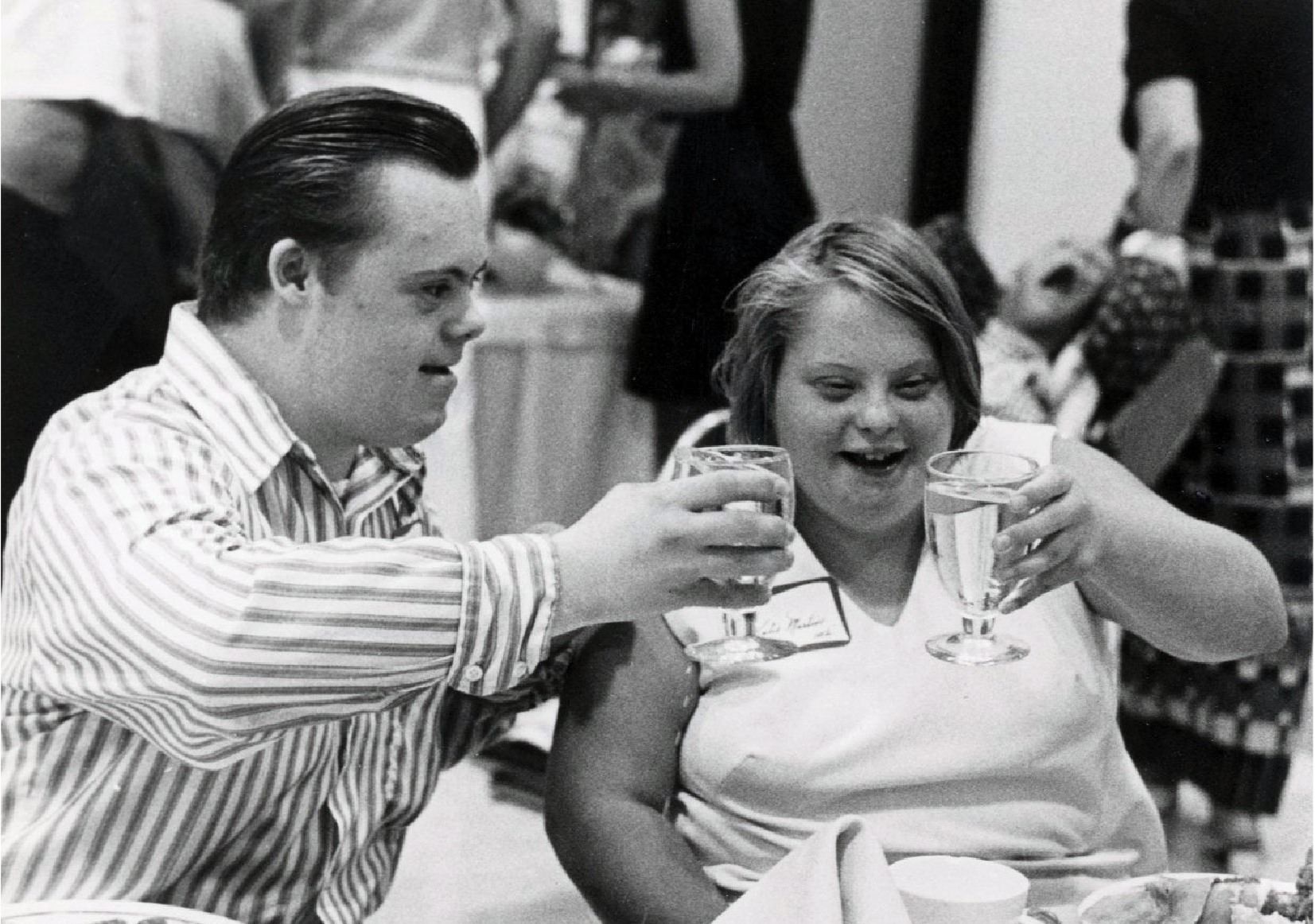History
Prior to 1967
The Era of InstitutionalizationThe Ohio Asylum for the Education of Idiotic and Imbecile Youth was opened in Columbus, Ohio.
The Cuyahoga County Council for the Retarded Child was established. This grass-roots group, led by parents of children with developmental disabilities, was founded to assist children of the region who had been excluded from their public schools.
The American Association on Mental Deficiency recognized parents who were partnering with professionals to advocate for community placement and special classes in public schools. A national parents’ conference was held at the end of the decade to support the growing number of parent advocates in starting their own
organization.
The Horn Report recommends a county system to be established to serve persons with mental retardation in Ohio.
President John F. Kennedy established the President’s Panel on Mental Retardation to recommend policy changes to better serve people with disabilities.
The Ohio General Assembly creates county boards of mental retardation.
The Cuyahoga County Board of Mental Retardation and Developmental Disabilities is established.
1970s
Beginning of the Parents’ Movement and DeinstitutionalizationOhio passes the Developmental Disabilities Service and Facilities Construction Act, which supported building new facilities in Ohio or improving current ones.
The Ohio General Assembly creates the Ohio Department of Mental Health and Mental Retardation to improve the conditions in Ohio’s institutions.
The Cuyahoga County Board of DD hires its first superintendent- Dr. Michael A. Donzella.
The Rehabilitation Act of 1973 addressed civil rights protection for people with developmental
disabilities.
Voters in Cuyahoga County support Issue 10- “For the training and care of the mentally retarded.” This was the first county levy.
The Education of All Handicapped Children Act passes, supporting states and localities in protecting the rights of, meeting the individual needs of, and improving the results of students with disabilities.
1980s
Beginning of the Self-Advocacy MovementOhio Senate Bill 160 takes effect, separating the services of county boards of MR (Mental Retardation) and community MH (Mental Health) which also added DD (Developmental Disabilities) to the name of county boards (CCBMR/DD).
The Home and Community-Based Services Waiver is established. This Medicaid program allows an eligible person to receive services at home or in a community setting rather than an institution.
The Ohio Association of County Board of Developmental Disabilities was created to support the state’s 88 county boards by providing information, continuing education, and legislative advocacy.
Governor Richard Celeste signed a bill creating a Bill of Rights for people with developmental disabilities. Ohio
establishes its Early Intervention program for children ages birth through two.
President Ronald Reagan designated March ad Developmental Disabilities Awareness Month.
1990s
Equal Rights and Equal OpportunityVoters in Cuyahoga County approve a 3.2 mills levy for CCBMR/DD.
The Individuals with Disabilities Education Act (IDEA) was passed (amending the Education of All Handicapped
Children Act), ensuring children with disabilities be granted a free and appropriate public education in the least restrictive environment. Additional amendments were passed in 1997 and again in 2004 to ensure
equal access to education.
President George H.W. Bush signs the Americans with Disabilities Act (ADA), prohibiting discrimination and
guaranteeing that people with disabilities have the same opportunities as others to participate in the mainstream of American life.
CCBMR/DD celebrates its 25th anniversary.
The Supreme Court upheld the ADA integration mandate, affirming the rights of individuals with disabilities to live in the “most integrated setting” and to receive services in the community. This is referred to as the Olmstead Decision.
2000s
Advancing Community Integration, Self-Determination and Individualized SupportsThe Ohio Self Determination Association was established to provide training and resources to help people with
disabilities direct their lives.
President Bush announced the New Freedom Initiative, a comprehensive program designed to ensure the full
participation of people with disabilities in all areas of society.
Congress appropriated funding for the creation of the Office of Disability Employment Policy to improve workforce developmental services for people with disabilities.
Ohio’s Governor Taft signed the victims of crime bill to increase protections for people with developmental
disabilities.
Congress amended the Assistive Technology Act to support state programs address assistive technology needs of people with disabilities.
Cuyahoga County voters pass Issue 7, For a Better Place in Life, in support of a 3.9 mills continuing levy that remains in place to date.
The Ohio General Assembly eliminated the words “idiot,” “lunatic,” and “imbecile” as descriptions of people with developmental disabilities from the Ohio Revised Code.
Nearly one million people were receiving services under a Medicaid Home and Community Based Services Waiver Ohio Senate Bill 79 changed the name of Ohio’s County Boards of Mental Retardation and Developmental Disabilities to County Boards of Developmental Disabilities.
2010s
Creating More Meaningful Lives: Moving from facility-based services to integrated, competitive employment and authentic community connections and participationOhio obtained approval from the federal government to start offering remote monitoring for people with
developmental disabilities to help more individuals lively safely and independently.
Ohio’s Governor Kasich launched Employment First, an initiative to create greater opportunities for working-age people with developmental disabilities.
The federal Centers for Medicare and Medicaid Services (CMS) adopt a Rule on conflict-free case management which states that county boards of DD cannot both administer and provider services; CMS views this as a conflict.
Employment Collaborative of Cuyahoga County is established as a collaborative effort to help more people with disabilities obtain competitive employment.
The Cuyahoga County Board of DD begins planning to phase out of adult, employment and transportation services be early 2020 as a result of the CMS Conflict-free Case Management Rule.
The Cuyahoga County Board of DD hires advocates known as Good Life Ambassadors (GLAs) to educate and inspire the community on the many benefits of inclusion of people with disabilities in all aspects of community life.






